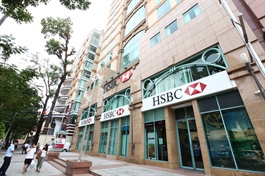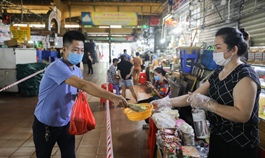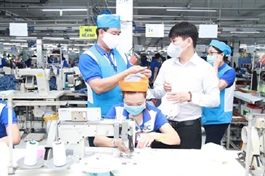CPI in first ten months is lowest in last five years
CPI in first ten months is lowest in last five years
The Consumer Price Index (CPI) in October was down by 0.2 per cent from September, meaning the CPI in the first ten months of this year grew 1.81 per cent over the same period last year, the lowest growth rate since 2016.

According to the General Statistics Office (GSO)’s meeting yesterday in Ha Noi, the CPI in the two remaining months of the year could increase as the driving factors change after social distancing measures are eased.
The GSO said in October, prices of food and catering services decreased by 1.28 per cent from September due to the drop of 0.25 per cent and 9.38 per cent in the prices of rice and pork, respectively, thanks to abundant supplies after social distancing.
It also said prices of housing and construction materials in October fell by 0.26 per cent due to a cut in housing rental rates to support people amid the pandemic, while electricity prices were also reduced because cooler temperatures affected demand for power and water compared to the previous month. Prices of post and telecommunications inched down 0.04 per cent.
Among eight groups of commodities and services experiencing rising prices last month, transport witnessed the highest month-on-month increase of 2.51 per cent, which was attributed to the fuel price hike.
Also rising, education prices inched up 0.25 per cent against September.
GSO said core inflation in October experienced a month-on-month decline of 0.17 per cent but a year-on-year rise of 0.5 per cent. In the first 10 months, the figure increased 0.84 per cent compared to the same period of 2020, reflecting price movements driven by the hikes of food, petrol and oil and gas prices.
GSO said core inflation in October and the first 10 months of 2021 compared to the previous year stood at the lowest level since 2011.
It also said as November-December will be a time to focus on production, travel and procurement for major holidays, while CPI in tourism services and entertainment is projected to see growth.
Production and business activities restored
Also at the meeting, GSO announced industrial production in October prospered when social distancing measures were eased, production and business activities were gradually restored to a new normal state.
The office said the index of industrial production (IPI) in October 2021 was estimated to increase by 6.9 per cent from September and down 1.6 per cent year-on-year.
In general, in the first ten months of 2021, the IIP increased by 3.3 per cent over the same period in 2020. This figure was higher than the growth rate of 2.6 per cent in the same period of 2020.
In which, the processing industry and manufacturing increased by 4.5 per cent, contributing 3.99 percentage points to overall growth while electricity production and distribution increased by 4.1 per cent, contributing 0.36 percentage points.
Statistics show that the IIP in the first ten months of some key industries belonging to level II increased sharply compared to the same period last year.
Specifically, metal production increased by 25.1 per cent; motor vehicle production increased by 12.5 per cent; production of coke, refined petroleum products by 10.5 per cent; textiles increased by 7.8 per cent; production of electronic products, computers and optical products by 6.4 per cent; and garment production and waste collection, treatment and destruction, and scrap recycling both increased by 5.1 per cent; and production of leather and related products increased by 4.3 per cent.
On the other hand, the IIP of some industries decreased, including production of drugs, pharmaceutical chemicals and medicinal materials, crude oil and natural gas exploitation, repair, maintenance and installation of machinery and equipment, beverage production and the production of other means of transport.
The office also said a number of key industrial products in the first ten months increased sharply compared to the same period last year, which included phone components, rolled steel, petrol and oil, LPG, iron, crude steel and automobiles.
While some products such as televisions of all kinds, natural gas, assorted beer, and crude oil extraction decreased.
The number of employees working in industrial enterprises as of October 1 increased by 7.7 per cent compared to the same time last month. Compared to the same period last year, it still decreased by 7.9 per cent, showing production firms were still facing many difficulties and labour shortage has become a key issue, said the office.






















